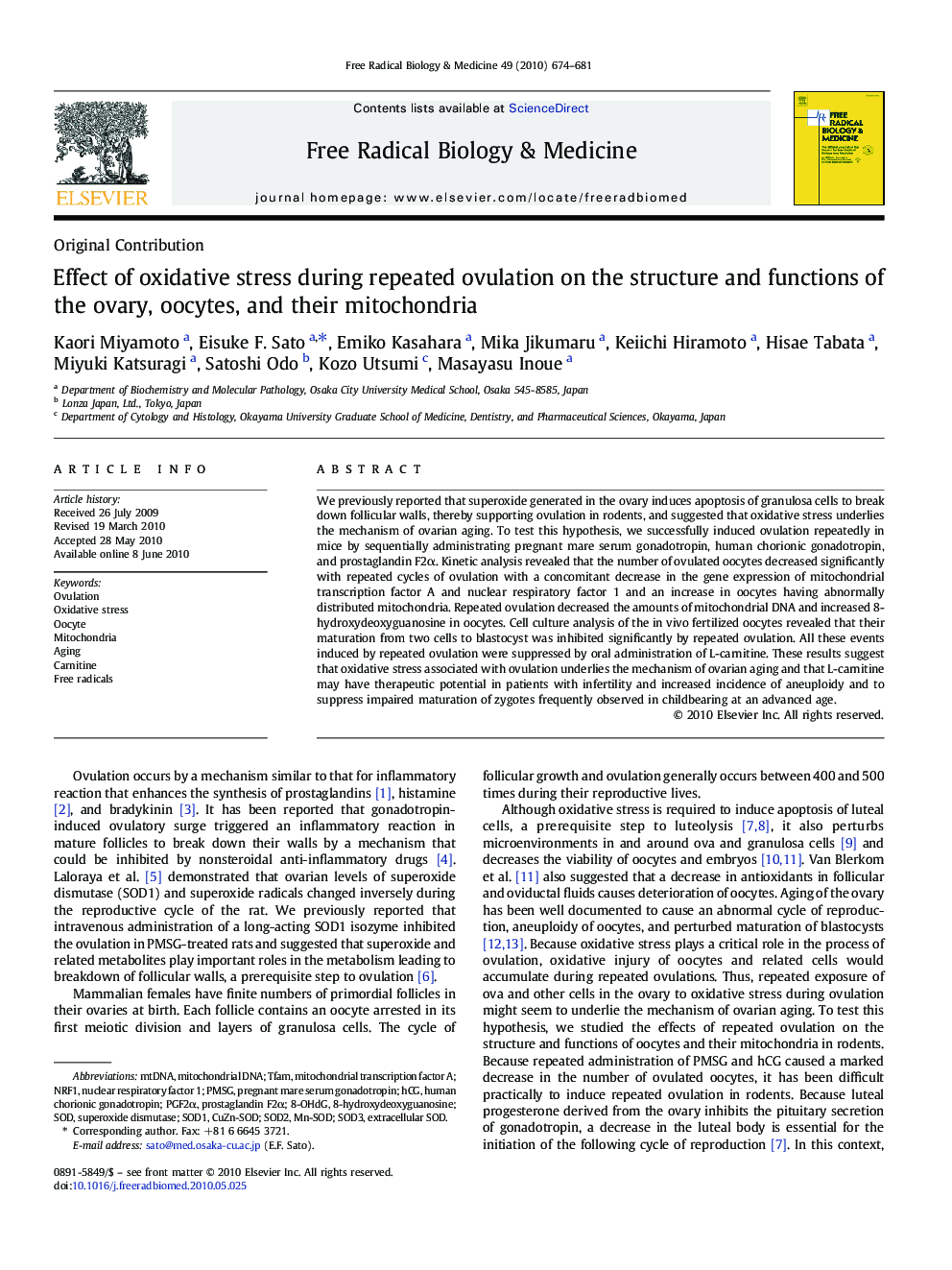| Article ID | Journal | Published Year | Pages | File Type |
|---|---|---|---|---|
| 1909277 | Free Radical Biology and Medicine | 2010 | 8 Pages |
We previously reported that superoxide generated in the ovary induces apoptosis of granulosa cells to break down follicular walls, thereby supporting ovulation in rodents, and suggested that oxidative stress underlies the mechanism of ovarian aging. To test this hypothesis, we successfully induced ovulation repeatedly in mice by sequentially administrating pregnant mare serum gonadotropin, human chorionic gonadotropin, and prostaglandin F2α. Kinetic analysis revealed that the number of ovulated oocytes decreased significantly with repeated cycles of ovulation with a concomitant decrease in the gene expression of mitochondrial transcription factor A and nuclear respiratory factor 1 and an increase in oocytes having abnormally distributed mitochondria. Repeated ovulation decreased the amounts of mitochondrial DNA and increased 8-hydroxydeoxyguanosine in oocytes. Cell culture analysis of the in vivo fertilized oocytes revealed that their maturation from two cells to blastocyst was inhibited significantly by repeated ovulation. All these events induced by repeated ovulation were suppressed by oral administration of L-carnitine. These results suggest that oxidative stress associated with ovulation underlies the mechanism of ovarian aging and that L-carnitine may have therapeutic potential in patients with infertility and increased incidence of aneuploidy and to suppress impaired maturation of zygotes frequently observed in childbearing at an advanced age.
